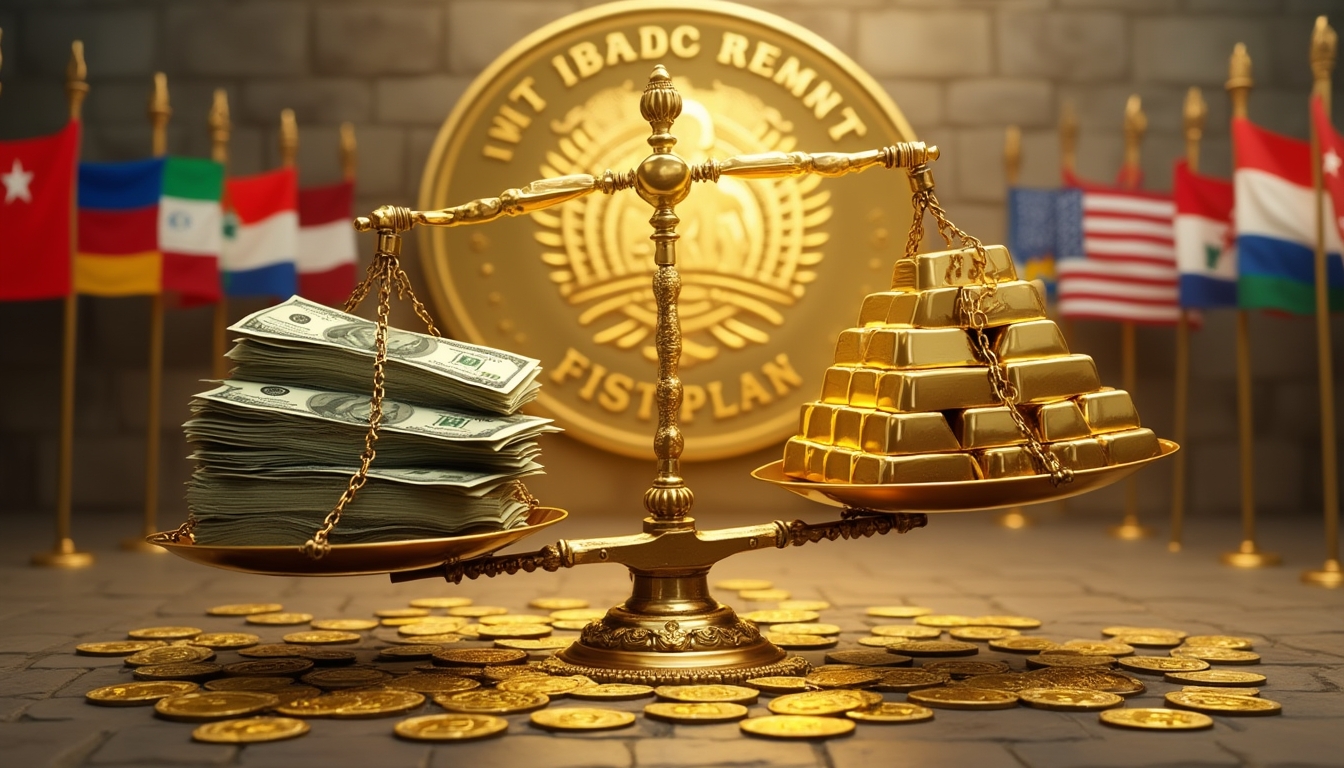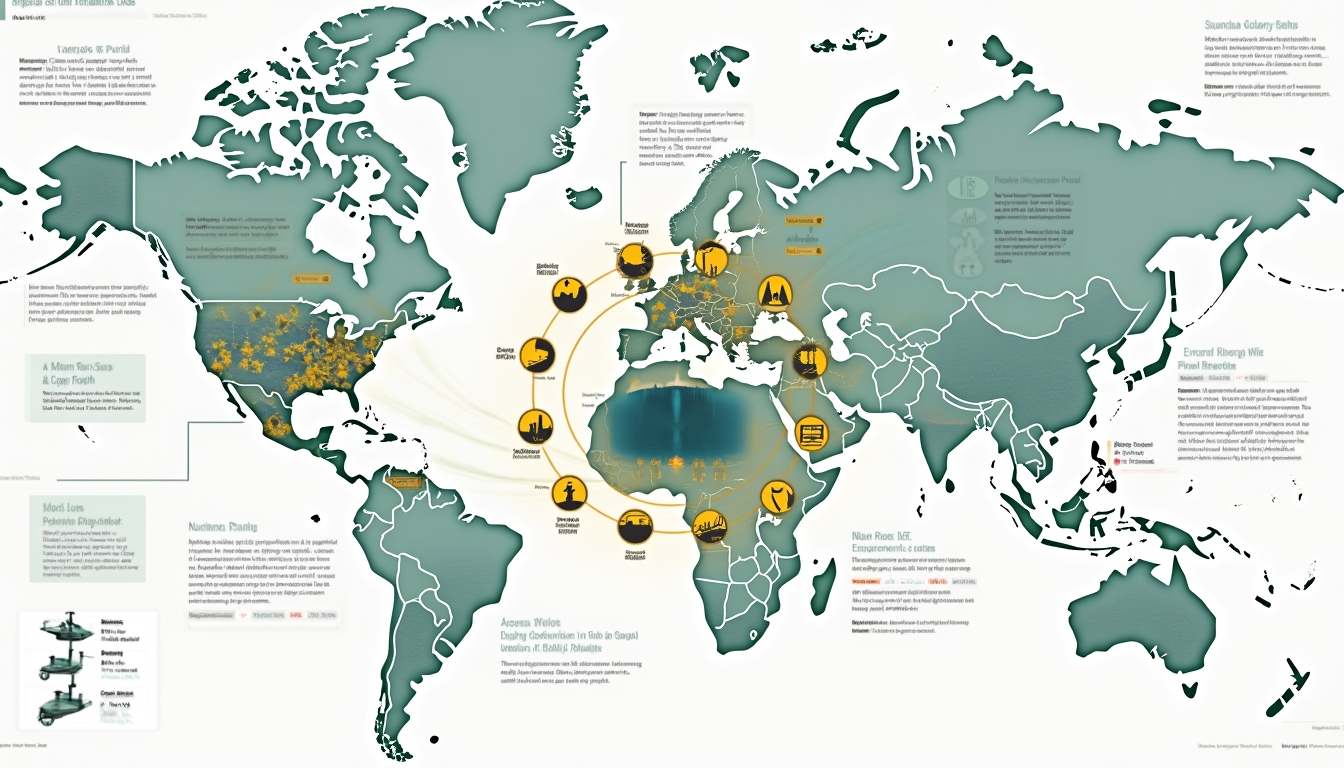The mystery surrounding Gold price and Fort Knox reserves has long captivated financial experts and conspiracy theorists alike. Official reports claim that approximately 8,100 tons of U.S. gold are securely housed at Fort Knox, complemented by additional reserves at the New York Federal Reserve. These staggering numbers have fuelled debates about the maintenance of global monetary trust and the real state of the nation's wealth. In some discussions, factors like historical records and modern audit debates are critically analysed, as seen in discussions on gold records debate.
Notably, former President Donald Trump once publicly questioned the authenticity of these gold holdings, dramatically implying that only 27 tons might remain – if any at all. His bold assertions have given rise to an intense debate surrounding the transparency and integrity of U.S. monetary reserves. Further analysis on the complexities of these debates is available when one explores key influences on gold, which offers insight into the interplay between global economic factors and the mystique of Fort Knox.
Why Does a Potential Lack of Gold Reserves Matter?
Fort Knox represents roughly 2% of the total gold mined worldwide, making its holdings critically important. Should these reserves diminish substantially, the implications for global financial stability would be profound. A severe shortage could undermine confidence not only in the American economic system but also in the broader international financial landscape.
Any reduction in the physical amount of gold stands to erode trust in the U.S. dollar, whose credibility hinges on tangible monetary backing. Investors and economists alike are increasingly aware that:
- A verifiable audit of gold holdings serves as an essential trust signal.
- The physical gold held at Fort Knox supports a substantial portion of the nation's wealth.
- A lack thereof might trigger a realignment in global currency valuation strategies.
Central banks around the globe are also rethinking their strategies, a topic that is further explored in articles on central bank trends. In this context, the reality of Gold price and Fort Knox reserves becomes all the more significant as markets reassess risk in an uncertain environment.
How Does the Current Gold Price Compare to Other Assets?
Global central banks collectively hold gold valued at roughly US$3 trillion – a figure that astonishingly matches the market capitalisation of some leading technology companies such as Microsoft. With the current gold price hovering around US$2,920 per ounce, many financial analysts argue that gold remains "ridiculously undervalued." This undervaluation becomes even more relevant when compared to other high-value assets.
Comparative Asset Valuation
- Central Bank Gold: Valued at approximately US$3 trillion, largely because institutions worldwide view gold as a hedge against inflation.
- Major Tech Stocks: Also worth around US$3 trillion, yet these stocks face volatility in an era of escalating global tensions and inflationary pressures.
- Real Estate and Other Commodities: Often seen as safer, these assets still cannot compete with gold's inherent stability in times of economic uncertainty.
Articles discussing gold and silver investments provide further insight into how investors weigh the benefits of physical versus paper assets in a market that has shifted dramatically over the last few decades.
As predicted by many experts, the accelerating gold price is more than just a market anomaly — it is a reflection of the economic pressures faced globally. Recent trends indicate that rising interest in gold can be tied directly to inflation concerns and the ongoing devaluation of fiat currencies. For a comprehensive view on this matter, market watchers have closely observed movements that could lead to a potential gold price explosion.
What Drives the Accelerating Gold Price?
Since the termination of the gold standard in 1971, gold has seen an approximate 84x price increase, while fiat currencies have experienced steady devaluation. The escalating global debt and the rapid expansion of governments’ balance sheets have contributed significantly to inflationary pressures around the world. This dynamic continuously reinforces gold’s reputation as a safe-haven asset.
The value of gold tends to follow a predictable cycle:
- Currency debasement due to uncontrolled money printing.
- Erosion of fiat value, creating long-term economic instability.
- A critical investor shift towards tangible assets like gold.
- A subsequent increase in the gold price that reflects its safe-haven status.
These cyclical patterns have been analysed extensively in research that details the historical performance of gold, as well as contemporary strategies for investors. For further exploration into these patterns, insights on investment strategies can provide a more granular understanding of the market.
Moreover, discussions about potential U.S. policy changes — such as a revaluation of gold reserves — have gained traction in mainstream media. Notably, an article from Forbes delves into whether it might soon be time for the US to consider a significant revaluation of its gold holdings, presenting an interesting perspective on the possible future of Gold price and Fort Knox reserves. One can examine detailed viewpoints in the piece on us gold revaluation.
Expert Perspectives on Gold Reserves
Financial experts such as Egon von Greyerz consistently emphasise the importance of physical gold as a safeguard against the unpredictable nature of fiat currencies. Commonly referred to as "nature's money," gold cannot be printed or manipulated by digital hacks, providing it with a unique and enduring allure.
Trump’s controversial statement—"would not be surprised if there is nothing here – they stole this too!"—has only deepened the intrigue surrounding Fort Knox and Gold price and Fort Knox reserves. The scepticism voiced by such high-profile figures has led to calls for greater transparency and more frequent audits, with many experts urging policymakers to adopt measures that reinforce investor confidence.
Investor Strategies for Physical Gold
In recent years, a noticeable shift has occurred as investors move away from solely paper-based gold investments towards acquiring physical bullion. This change is primarily driven by:
- Concerns over potential government confiscation.
- The risk associated with infinitely inflatable paper assets.
- The assurance of tangible wealth preservation.
Investors who choose physical gold often implement robust strategies to mitigate these risks, including:
- Storing bullion in secure, private vaults, often located offshore.
- Diversifying their portfolios to include a mix of precious metals.
- Regularly reviewing audit reports to ensure the authenticity of their holdings.
These strategies not only safeguard wealth but also provide a hedge against macroeconomic uncertainties. For those interested in learning more about these methods, a focused analysis of physical investments trends is available, offering detailed insights into market dynamics and opportunities.
How Can Gold Price and Fort Knox Reserves Shape Future Policies?
Gold price and Fort Knox reserves remain at the heart of debates over monetary policy and investor confidence. As central banks continue to implement policies favouring expansive money creation, the allure of gold as a pure, finite asset grows stronger. The unique nature of physical gold continues to stand as a bulwark against the uncertainties of modern economic policy.
Key considerations for future fiscal strategies include:
- Ensuring regular and transparent audits of national gold reserves.
- Leveraging gold as part of a diversified asset portfolio.
- Embracing regulatory reforms that enhance the integrity of financial institutions.
Market observers are increasingly attentive to developments that may signal shifts in economic doctrine. Whether through enhanced digital transparency or heightened physical security measures, the future of Gold price and Fort Knox reserves is likely to shape the broader dialogue on fiscal responsibility and economic resilience.
Conclusion: The Future of Gold Reserves
Persistent rumours and public debates regarding Gold price and Fort Knox reserves underscore the importance of this storied asset in modern economic discourse. With global central banks holding trillions of dollars in gold, this enduring asset continues to command respect and strategic scrutiny.
Summarising the key points:
- The credibility of U.S. monetary policy could be significantly compromised should any reduction in physical gold reserves occur.
- Historical and recent trends both underline the rapid appreciation in the value of gold compared to fiat currencies.
- Investor strategies are now increasingly geared towards securing tangible assets, thereby enhancing wealth protection.
Investors who seek enhanced wealth preservation should continuously re-examine their risk tolerance, monitor official audits, and consider implementing a resilient mix of physical and diversified asset strategies. As policymakers and market participants explore more robust frameworks for monetary transparency, it remains clear that Gold price and Fort Knox reserves will continue to be a pivotal topic in global financial discussions.
Want to Stay Ahead in Gold and Precious Metal Investments?
Discovery Alert provides real-time, AI-driven insights into mineral and precious metal investment opportunities, helping both new and experienced investors navigate complex market landscapes with simplified, actionable intelligence. Start your 30-day free trial today and transform how you approach investment strategies in the gold and commodities sector.







